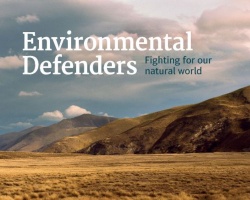Feb/March Peak Injury Time for Child Cyclists
20 February 2003
Media release
for immediate
use
www.roadsafeauckland.org.nz
Feb/March Peak Injury Time for Child Cyclists
February and March are the peak times for injuries to child cyclists in the Auckland region and RoadSafe Auckland say bike helmets are a must.
Peter Kippenberger, Regional Manager for the Land Transport Safety Authority says that from 1996 – 2000 injuries to children riding bikes peaked annually in February and March. More than 180 children aged under 15 years were hospitalised each year in the region with a cycle related injury, a quarter of them in the two month period.
“The warmer summer weather and the return to school, are two factors which we believe make these months a higher risk time for young riders,” said Mr Kippenberger.
In most areas of the Auckland region, more child cyclists were injured than child pedestrians, with the exception of Auckland City. Child cyclists in the region were also more at risk of being injured than others throughout the country.
Mr Kippenberger urged parents to ensure children always wore approved cycle helmets, especially when riding on the road. “There has been some debate lately about the use of bike helmets and parents may have the impression their children will be safe riding without them. This is untrue. Child cyclists are more exposed to traffic than other children and therefore need the protection of helmets in case of a crash.”
But while they are important, helmets are not the beginning and end of cycle safety. It's important that parents take the time to teach children safe riding skills, and it's equally important that drivers keep an eye out for cyclists and respect their right to be on the road. The LTSA is working with cyclist organisations to develop more safe and accessible cycling routes.
Dr John Wren of SafeKids said there was plenty of evidence to show that in the event of a crash, helmets could reduce the risk of a severe head or brain injury by 63-88% for cyclists of all ages. While bike and motorcycle helmets were tested at impacts of 22 kph, he said they usually protected wearers when the initial speed was higher as well. Research on crashed bicycle helmets showed that most people hit the ground at a relative speed of about 14 kph.
Dr Wren said no one expected helmets to save a rider hit at speed by a car or who hit a brick wall at 50 kph and whose head took a direct blow at that speed. “But sending kids out on bikes without helmets is like driving a car without wearing a safety belt – it’s irresponsible and illegal.”
Roadsafe Auckland is the working group responsible for co-ordinating road safety issues within the Auckland region.
ENDS
RoadSafe
Auckland is a region wide road safety group made up of
representatives from Auckland’s seven Territorial
Authorities, Regional Council, Land Transport Safety
Authority (LTSA), NZ Police, Transit New Zealand, ACC,
Auckland Healthcare, Alcohol Advisory Council (ALAC),
Safekids and the Ministry of
Health.


 Environmental Defence Society: Groundhog Day, New Book Shows History Is Repeating Itself
Environmental Defence Society: Groundhog Day, New Book Shows History Is Repeating Itself NZEI Te Riu Roa: Mandated Single Approach To Reading Will Not Work
NZEI Te Riu Roa: Mandated Single Approach To Reading Will Not Work The Conversation: Could The School Phone Ban Work?
The Conversation: Could The School Phone Ban Work? Public Health Communication Centre: To Avoid A Measles Epidemic, Aotearoa Must Close The ‘Immunity Gap’
Public Health Communication Centre: To Avoid A Measles Epidemic, Aotearoa Must Close The ‘Immunity Gap’ Heritage New Zealand: Kid-friendly Archaeology Resource Kit Launched As Part Of Archaeology Week
Heritage New Zealand: Kid-friendly Archaeology Resource Kit Launched As Part Of Archaeology Week Tatai Aho Rau Core Education: Cyber Skills Programme For Tamariki Recognised At Māori Language Awards
Tatai Aho Rau Core Education: Cyber Skills Programme For Tamariki Recognised At Māori Language Awards